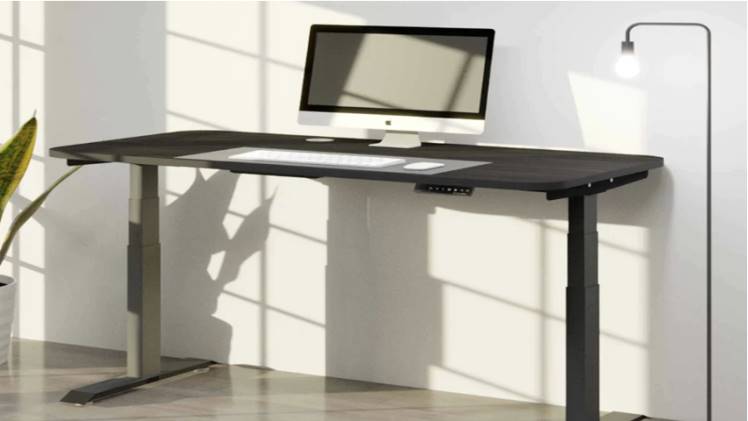Find Your Best Standing Desk for Improved Health and Productivity

In an era where sedentary lifestyles dominate our work culture, the best standing desk has emerged as a beacon of hope for those seeking a healthier and more productive alternative.
Unlike traditional desks that confine us to a seated position for hours on end, standing desks offer a dynamic and adjustable solution, allowing users to elevate their workstations literally.
The concept is simple: by incorporating standing periods into your work routine, you can reduce health risks associated with prolonged sitting, including back pain, obesity, and cardiovascular issues. But, the benefits of best standing desk extend far beyond physical health, influencing mental well-being and overall productivity.
Table of Contents:
- Productivity Benefits of Standing Desks
- How to Properly Use a Standing Desk
- Common Mistakes to Avoid When Using a Standing Desk
- Tips for Maintaining Good Posture and Avoiding Fatigue While Using a Standing Desk
- Conclusion: Finding the Perfect Standing Desk for Your Needs and Goals
Productivity Benefits of Standing Desks
Increased Energy and Alertness: Standing promotes better blood circulation and oxygen flow, increasing energy levels and heightened alertness. This translates to improved focus and concentration throughout the workday.
Enhanced Mood and Creativity: Physical activity, even standing, triggers the release of endorphins – the body’s natural mood enhancers. As a result, best-standing desk users often report elevated moods and increased creativity.
Greater Productivity: The ability to switch between sitting and standing positions allows for enhanced adaptability to the task at hand. Many users find that standing helps maintain a sense of urgency, improving task completion rates.
Reduced Sedentary-Related Health Issues: By reducing sitting time, standing desk users often experience fewer health issues associated with sedentary lifestyles, such as obesity, diabetes, and cardiovascular problems.
How to Properly Use a Best Standing Desk
Start Gradually: If you’re a newbie to standing desks, it’s crucial to ease into the transition. Begin by standing for short intervals, gradually increasing the duration as your body adjusts.
Invest in Proper Ergonomics: Ensure your best standing desk is set at the correct height, aligning your computer screen at eye level. This helps maintain a neutral wrist position and reduces strain on your neck and shoulders.
Wear Comfortable Shoes: Supportive footwear is essential for standing comfortably for extended periods. Make sure you wear shoes that provide adequate arch support and cushioning.
Alternate Between Sitting and Standing: The key is balance. Aim to alternate between sitting and standing every 30 to 60 minutes to prevent muscle fatigue and promote better circulation.
Common Mistakes to Avoid When Using a Standing Desk
Poor Desk Height: Setting your desk at an incorrect height can lead to discomfort and health issues. Ensure your desk is adjusted to a size that allows your elbows to be at a 90-degree angle when resting on the surface.
Ignoring Anti-Fatigue Mats: Standing on harsh surfaces can cause discomfort. Invest in an anti-fatigue mat to reduce strain on your feet and legs.
Neglecting Movement: Standing doesn’t mean standing still. Incorporate subtle movements such as shifting your weight from one leg to another or doing light stretches to prevent stiffness.
Forgetting to Hydrate: Standing promotes better blood circulation, which leads to increased fluid loss. Stay hydrated by having a water bottle within reach.
Tips for Maintaining Good Posture and Avoiding Fatigue While Using a Best Standing Desk
Engage Core Muscles: Keep your abdominal muscles engaged to support your spine and maintain proper posture.
Relax Shoulders: Allow your shoulders to relax and avoid hunching over. Please keep them in a natural, comfortable position.
Position Computer at Eye Level: To prevent neck strain, ensure your computer screen is at eye level, allowing you to maintain a neutral neck position.
Take Breaks: Take short breaks to sit, stretch, and move around. Holidays are crucial for preventing fatigue and maintaining overall well-being.
Conclusion: Finding the Perfect Standing Desk for Your Needs and Goals
In conclusion, standing desks benefit mental well-being and productivity. When seeking the best standing desk for your needs, consider factors such as adjustability, ergonomics, and ease of use. It’s an investment in your health and work performance that can pay off significantly in the long run.
Start gradually, listen to your body, and adjust as needed. Whether you opt for a full-standing desk or an adjustable converter for your existing workspace, finding the right fit can transform your work routine and contribute to a healthier, more productive lifestyle.
So, stand tall, work smart, and embrace the positive changes a standing desk can bring to your professional and personal life.





